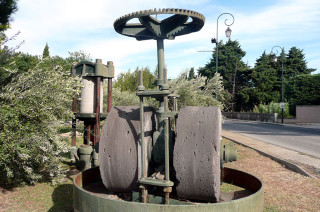The Greeks believed that the cultivation of the olive tree was the hallmark of a civilized society, and they may have been on to something. Twenty-five centuries after they brought olive trees to Provence, to call the region “civilized” barely scratches its surface.
How They Make Provence Olive Oil

In Provence, the olive harvest usually begins in November and lasts until the end of January. The olives selected to make the oil are washed in cold water and then crushed by a millstone and worked into a paste. The paste is then pressed between large discs (known as scourtins) traditionally made of hemp, though today nylon is frequently used. Eleven or 13 pounds of paste are spread on each disc, and the discs are then stacked together (25 to 50 at a time) on the hydraulic presses. As the discs are pressed together, the liquid parties—oil and water—drain into the centre of the press and are then separated.
Olive oil produced by this method is known as the first cold-pressed olive oil, and is a pure product. In Provence, it takes five kilograms (10 pounds) of olives to produce one litre (34 ounces) of oil.
“The olive trees are silver, with sometimes a hint of blue or greenish bronze whitening against earth that is yellow, violet, orange or a dull red. But always so hard, hard, hard … it suits me well to work with gold and silver.”

